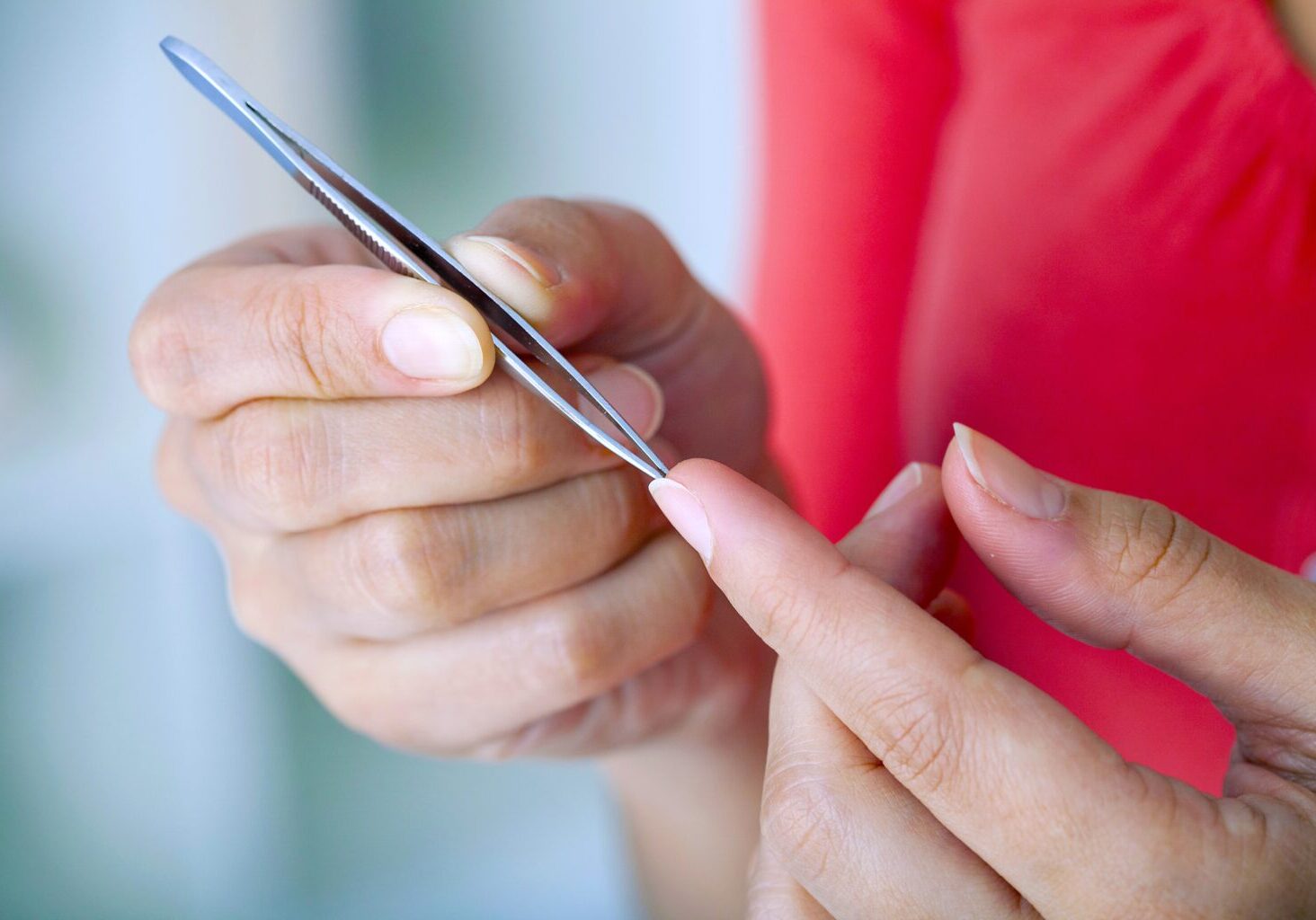What are hair splinters? How can barbers, hairstylists, and pet groomers avoid them?
Last Updated: March 21, 2025

When you do hair for a living, there are a few obvious occupational hazards you’re trying to prevent. You or your clients could slip, trip, or fall. There’s contact dermatitis in hairdressing and repetitive strain injuries in barbershops. Folks may sue your hair salon for complaints like cuts, infections, and burns.
Considering all the ways you could injure yourself or a customer while doing their hair, have you ever considered the likelihood of their hair hurting you? That’s the prickly reality of hair splinters.
Sadly, not all cosmetology schools adequately warn or educate about hair splinters. They can be a shear nightmare for unsuspecting new barbers and stylists. To help you feel prepared, we’re answering common questions like:
- What is a hair splinter?
- Are they a risk?
- What should a beauty professional do if they experience a hair splinter?
- How can you prevent them?
What is a hair splinter? Why are barbers and hairstylists more prone to hair splinters?
Hair splinters, also known as hair slivers, are a small nuisance that can cause a mighty amount of pain. When barbers, stylists, and even pet groomers use sharp, high-end tools to cut hair, the freshly-cut hair strands are often extremely sharp.
Hair slivers are so sharp, they’re often compared to needles. They’re known to pierce the skin and embed themselves under the surface through contact or friction, much like wood splinters. That’s why hair splinters hurt so badly. Dog hair splinters are no exception.
What are the most common areas where hair splinters occur?
Due to the way you handle hair, the skin on your hands and fingers is most susceptible to slivers. (And because you handle hair more than others, barbers and hairstylists are also more prone to splinters overall.)
But you’d be surprised where else you’ll find them. If you wear open-toed shoes, you’ll likely get slivers on the soles of your feet, too. You’ll find them in even weirder places if they get stuck in your clothes or are directed toward your face while cutting. For example, barbers and stylists have reported finding these slivery suckers embedded:
- In their legs, arms, and armpits.
- In their faces.
- Under their fingernails.
- Between their teeth, In their gums, or in the roof of their mouth.
- In their chest, back, or bellybutton.
- In their eye.
Do certain hair types cause more slivers than others? Yes, coarse or curly hair is most frequently associated with hair slivers.
Can hair splinters go unnoticed for a long time? This depends on how deeply embedded they are. Superficial splinters are easy to feel and detect. Deep hair splinters may look like dark specks (or nothing at all) from a glance. (Not squeamish? Watch this hair splinter removal video for a great example.)
Why are hair splinters a risk?
As long as they’re extracted quickly, hair splinters pose little risk. In most cases, they’re considered a minor injury, Donna Christiano writes in a Healthline article. But what if you don’t want to remove it?
If tweezers aren’t your cup o’ tea, you’re probably wondering: Can you leave a hair splinter in? Do hair splinters go away by themselves?
The body can sometimes push out hair splinters naturally. It’s still a foreign object, however, so it’s important to remove it ASAP. Otherwise, it can trigger an immune response and lead to an infection, Christiano says. Infected hair splinters typically require medical attention.
In short, is a hair splinter dangerous? No, it’s highly unlikely. But if you’re worried about infections or need help extracting it, visit your doctor. A medical professional can show you how to treat an infected hair splinter correctly. They can also remove it safely, sometimes surgically, without causing unnecessary infections or harm.

How to Safely Remove a Hair Splinter at Home
Superficial splinters on the skin (i.e., not a hair splinter in your eye or mouth) are often easy to remove at home. In fact, the internet is full of tips for how to get hair slivers out.
What should a beauty professional do if they experience a hair splinter? Here are a few basic steps to consider:
- Soak. Soaking in warm water makes the skin more pliable, says Sian Jones of Hairdressers Journal International. Some people even find that washing dishes will work out the splinters. Be careful not to squeeze your skin or apply firm pressure, Jones warns. That can push the splinter deeper into the skin.
- Friction. If it’s superficial, apply duct tape to the affected surface and gently pull it off, Christiano recommends.
- Tweezers. For slivers embedded deep in the skin, get a sterilized needle and tweezers. Use the needle to expose the hair splinter, then tweezers to remove it, Christiano says.
- Clean again. Once finished, clean the site and wrap it in a bandage.
If you’re struggling to extract it, leave it and see a doctor.
How to Prevent Hair Splinters
What’s easier than treating hair splinters? Preventing them altogether.
If you haven’t already, consider adopting the following practices into your daily routine:
- Wear close-toed shoes and socks.
- Vacuum and clean your station as frequently as possible, Jones writes.
- Wear gloves.
- Cut hair away from your face.
- Avoid touching your eyes.
- Use eye drops if you feel something in your eyes.
- Wear protective clothing and eyewear.
WellnessPro: Protection that won’t split hairs.
Unlike hair splinters, hair salon complaints and lawsuits can be challenging to prevent. For security and peace of mind that won’t split hairs, barbers and stylists choose WellnessPro.
Insurance for barbers and hairstylists is only 15 minutes away. Apply here to get covered.
